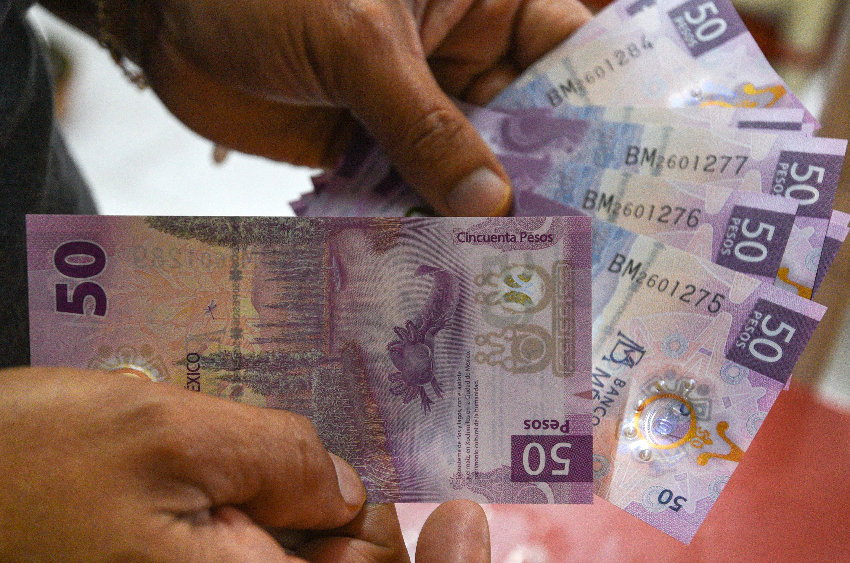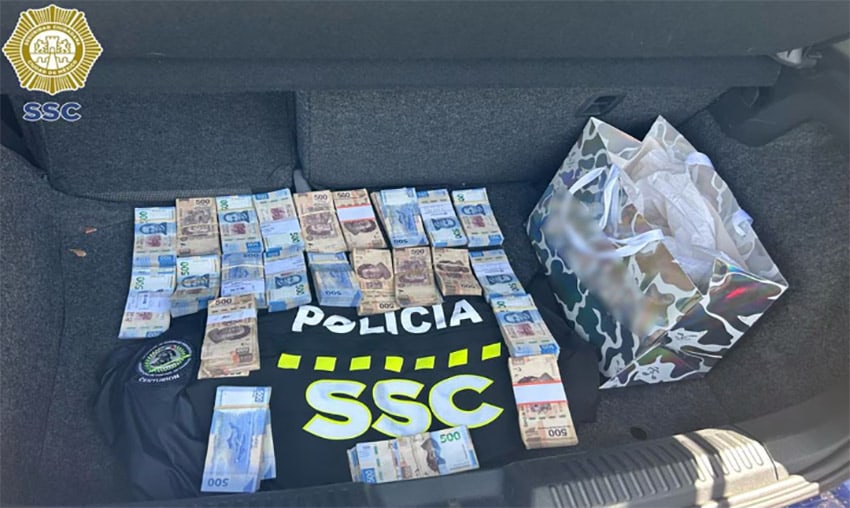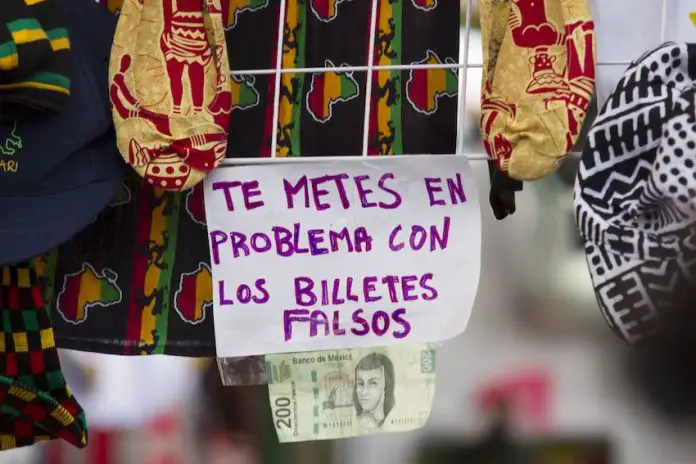Double check your change!
More than 200,000 fake banknotes were detected in Mexico in the first nine months of 2024, according to the Bank of Mexico (Banxico).

The central bank reported that it identified 224,390 counterfeit bills between January and September.
That means an average of around 822 fake notes were detected every day in the period.
Almost half of the phony bills identified between January and September — 108,835 or 48.5% of the total — were located in just three federal entities: Mexico City, México state and Jalisco.
Almost one-third of the fake banknotes were found in the capital, while more than 10% were located in México state, which includes many municipalities that are part of the Mexico City metropolitan area. Just over 7% of the billetes falsos showed up in Jalisco.
Baja California Sur and Campeche were the only two states where fewer than 1,000 fake bills were detected in the first nine months of the year.
Based on the January-September data, the Bank of Mexico is on track to identify just over 300,000 fake banknotes this year, a figure which would represent a small increase compared to 2023.
Banxico identified 299,476 counterfeit bills last year, a 17% decline compared to the record-high 360,926 fakes that were found in 2022.
What is Mexico’s most counterfeited banknote?
According to Banxico, the 200-peso note is currently Mexico’s most forged bill.

Data shows that the central bank has identified 50.9 fake 200-peso bills this year for every 1 million in circulation.
The second and third most counterfeited notes this year are the 500 peso and 1,000 peso bills, respectively.
The 200, 500 and 1,000 peso notes are all made out of paper, unlike the 20 and 50 peso bills, and most 100-peso ones, which are made out of polymer.
In January, Mexico City police arrested two alleged members of a counterfeiting and drug trafficking ring, and seized around 200,000 pesos (US $10,000) in apparent fake cash.
More allegedly counterfeit 500-peso bills were seized in the capital in April.
How to spot a counterfeit note
Earlier this year, the website Mexperience published an article entitled “Tips for spotting counterfeit Mexican banknotes.”
“When you’re handling Mexican banknotes, be sure to feel the paper; it should feel the same as, for example, US or Canadian dollars, British pounds, or euros,” says Mexperience.
“If the note doesn’t ‘feel’ right — paper used for counterfeit notes is often thicker than genuine banknote paper — check for additional security features,” the article continues.
Read the full article here.

On its website, the Bank of Mexico says it offers “training to identify security features in Mexican banknotes for financial institutions, legal authorities, government institutions, companies, and the general public.”
The training (Spanish only) can be completed in person in Mexico City or online. More information is available here.
What should you do if you think you have a fake bill?
According to Banxico, “if you have a banknote/coin which you believe is not authentic (presumably counterfeit/forged), do not continue using it.”
“Paying with a counterfeit banknote/coin is a federal crime punishable by up to 12 years in prison. You must turn it in to any bank so that they can send it to the Bank of Mexico to be analyzed. The Bank of Mexico is the only institution in Mexico that can determine whether a banknote/coin is authentic or counterfeit,” Banxico says.
“If at the moment of paying you are told that your banknote/coin seems counterfeit/forged, ask them to return it to you so that you can take it to a bank. Only banks can retain presumably counterfeit banknotes/coins and, in exchange, they must give you a receipt,” the central bank says.
“The bank must then send the presumably counterfeit banknote/coin to the Bank of Mexico to be analyzed,” it adds.
With reports from Expansión
